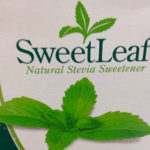 Sugary or Sugar-free?
Sugary or Sugar-free?
“SUGAR IS THE NEW FAT!”
This is the latest slogan popular in the wonderful and sometimes weird (not to mention confusing) world of food fads and fashions.
Fat used to be “bad” and then it became “good”. Carbohydrates used to be “good” until they did a 180 degree turn and became viewed as “bad”. Evil, fattening coconuts were completely out of the question for dieters until they too turned to the Good Side, gaining a halo and angel wings. Hardly anybody used to even know what gluten was until it, too, joined the ranks of the Foods of Darkness. Wine keeps switching sides, so that it’s sometimes hard to know what to believe.
Not only can food fashions be confusing, they can also be dangerous. “Orthorexia” is defined as “an obsession with eating foods that one considers healthy,” and “a medical condition in which the sufferer systematically avoids specific foods that they believe to be harmful.” {Google definitions]
The danger with following too many food-exclusion diets simultaneously, is that people can become orthorexic.
Recently a reader wrote to us saying that the recipes in “Is Food Making You Sick?” contained too much sugar for their liking.
The book is about Histamine Intolerance. It is not about a sugar free diet. It is not about a low-carb, gluten-free, low-FODMAP, lactose-free, vegan, vegetarian, fruitarian, specific carbohydrate, ketogenic, diabetic, detox, low-fat or any other kind of diet.
It is virtually impossible to cater for the entire range of popular diets, all in one book whose purpose is to focus on histamine intolerance. We have done our best, however! Many of our recipes are gluten-free, dairy-free vegetarian or vegan.
Besides, the fact is that sugar is not a food that is high in histamine, or that provokes a histamine reaction in the body, or that blocks the breakdown of histamine.
Having said that, it is important to note that Dr Alison Vickery states that histamine tolerance can be improved through the stabilization of blood sugar levels. She writes, “… unstable blood sugar can increase histamine levels, and histamine levels can progress the development of diabetes or insulin resistance.”
So, while sugar as a food in itself is not directly a problem for people with histamine intolerance, eating too much of it can cause a “spike” in your blood sugar levels. A spike is generally followed by a sharp drop in blood sugar levels as the body releases insulin to cope with your sugar intake. These zig-zagging spikes and sharp drops are what is meant by “unstable blood sugar”.
To stabilize your blood sugar levels:
- Avoid eating large quantities of sugar and foods containing refined carbohydrates (such as sodas, candy, cakes etc.)
- Choose foods that are low on the glycemic index.
- Avoid artificial sweeteners altogether.
- If you want extra low-calorie sweetness, choose stevia.
 Alternatives to Table Sugar
Alternatives to Table Sugar
People who prefer to eat less sugar can easily adapt the Strictly Low Histamine Diet to their needs. Here are some suggestions:
- Choose, from the book, recipes that contain no sugar.
- For recipes containing sugar, substitute rice malt syrup. Anti-sugar advocates say that the main problem with sugar is its fructose content. Rice malt syrup (also known as brown rice syrup) is fructose-free.
- Alternatively, substitute stevia for sugar. Stevia is a natural sweetener derived from the “sweet-leaf” plant, and it does not cause a spike in blood sugars when consumed.
We hope this post has been helpful!




Thank you for this!
Does brown sugar contain histamine? How about maple syrup? Many thanks for your blog.
I use Splenda is that bad?
I read that stevia is from a plant related to a daisy and ragweed, which those raise histamine levels, so would stevia?
Hi Momo,
Thanks for your enquiry.
In 1997 a group of Japanese inventors patented a stevia extract which they claimed to have antihistaminic properties. Additionally, one of sources, a food list for HIT sufferers published by SIGHI, the “Swiss Interest Group Histamine Intolerance”, identifies stevia as being well-tolerated. That said, we do recommend that HIT sufferers should use stevia with caution. Some individuals may react to it, while others will not.
I truly believe unstable glucoses levels and histamine intolerance are related and plays a critical part in causing the other. I developed onset of diabetes and simultaneously developed severe hives and welts covering my body. After controlling my blood glucose levels the hives and welts lessened. My regularly monitored A1c is averaging 140s. I still have hives and welts but is much less severe. I have been battling this since a year ago. I hope with diet and fasting I can put it into remission.
I have a sorbitol intolerance and get sugar reactions. Any suggestions for a sugar replacement
Carol if you have a sorbitol intolerance you need to read labels on processed foods to make sure there’s no sorbitol in them.
Sorbitol is also abundant in apples, pears, corn syrup, peaches and prunes.
As mentioned in our blog, some suggestions for sugar replacements are erythritol or stevia.